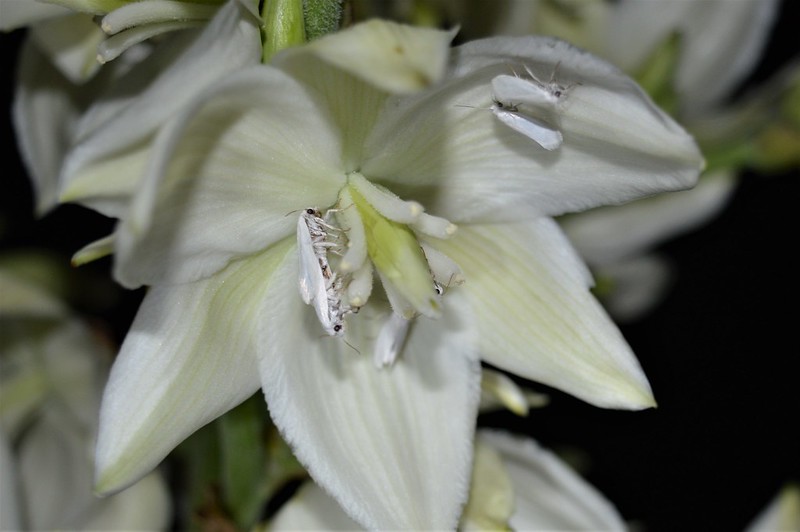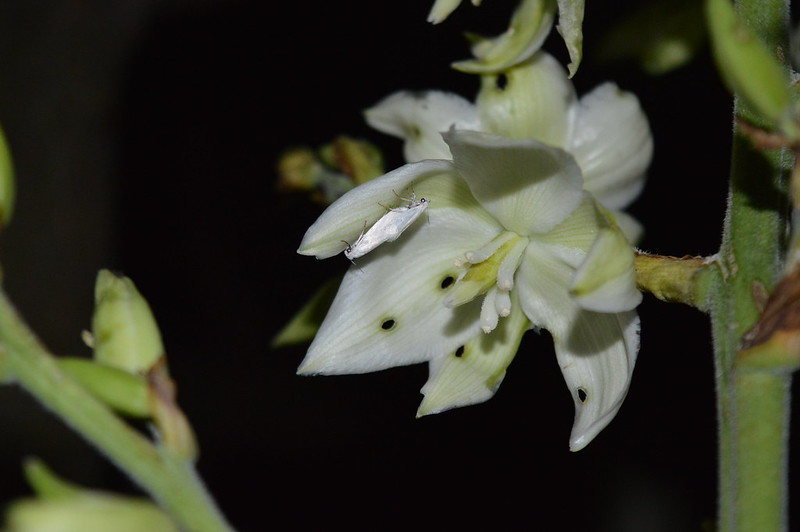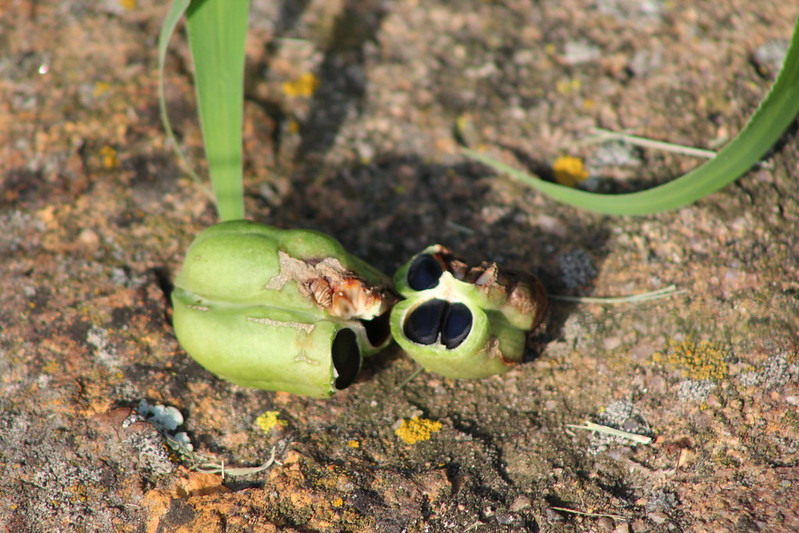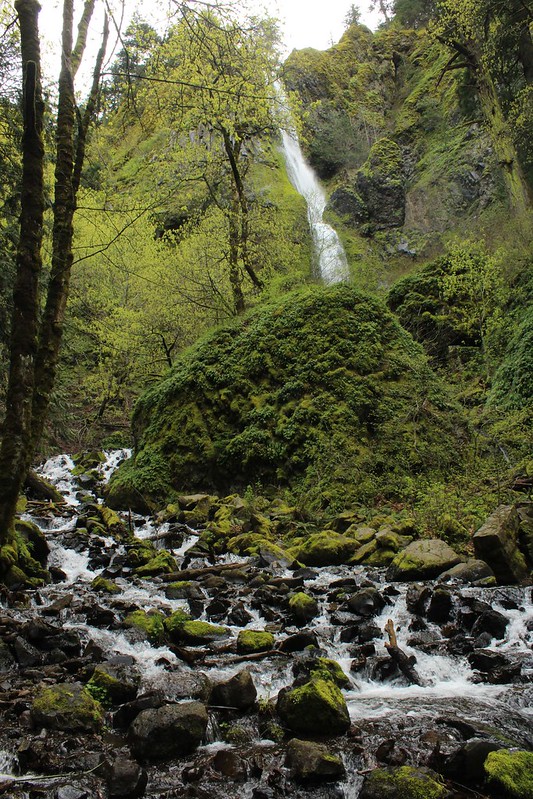After waiting almost a full year, I finally got to photograph two very special species of moth, the yucca moth (Tegeticula yuccasella) and bogus yucca moth (Prodoxus decipiens). Last year I didn’t know very much about these incredible moths and their symbiotic relationship with yuccas (Yucca filamentosa). I found out how cool they are only when my backyard yuccas were done flowering back in late June 2021. I had to wait until this June to fully appreciate them and get some photos of them.
The yucca plant and yucca moth are a classic case of interdependence, where the yucca plant relies on the yucca moth for pollination, and the yucca moth relies on the seed pods of the yucca plant for its larva to feed. The plant and the moth are very closely connected and rely on eachother to carry on their respective life cycles. This is the most interesting part: the yucca moth PURPOSELY pollinates the yucca flower after oviposition! Most insect-involved pollination occurs as a by-product of their foraging for nectar and pollen. It is extremely rare for an insect species to actively and purposely pollinate a flower.
Yucca moths emerge when the yucca is starting to bloom. Yucca moths are highly specialized to pollinate yuccas. Even with human intervention, by way of of a paintbrush to transfer pollen, it is difficult to accomplish what the yucca moth is so specially designed to do. The yucca moth is the only known pollinator for yuccas east of the Rocky Mountains. After mating on the yucca flowers, the female moth collects pollen from one or more flowers and arrives at a fresh flower. This is to ensure cross-fertilization. It chooses only fresh flowers, no more than a day or two old. The female moth deposits her eggs in the flower’s ovary and then immediately climbs up the stamen and actively shoves the pollen she collected from another flower down the stamen to make sure that a seed pod will grow.
The larva yucca moths feed on the growing seed pod for about a moth, then they bore their way out of the pod and drop to the base using silken strings. They live at the base of the yucca bunch and then later in the ground until the next year when they emerge as adults with the flowers. Make sure not to cut off the yucca stalks until August to make sure the larva moths have exited (I almost made this mistake last year).
There is a neighboring imposter, the bogus yucca moth, which does no work whatsoever to pollinate its host plant. It rides off of the pollination work of the true yucca moth. Adding more pollen to the stamen would just be redundant, they seem to think (correctly so). They lay their eggs in the scape (stalk) of the yucca. Here’s what’s really interesting: if none of the yucca flowers were pollinated by the true yucca moth, the stalk that the bogus moth larva feed on withers and dies because there are no seed pods to support growth.
Without the active pollination by the true yucca moth, the true yucca moth’s larva would have no seed pod to feed off of, the bogus yucca moth’s larva would perish, and the yucca itself would not have a seed crop that year. How crazy is that?!






















































